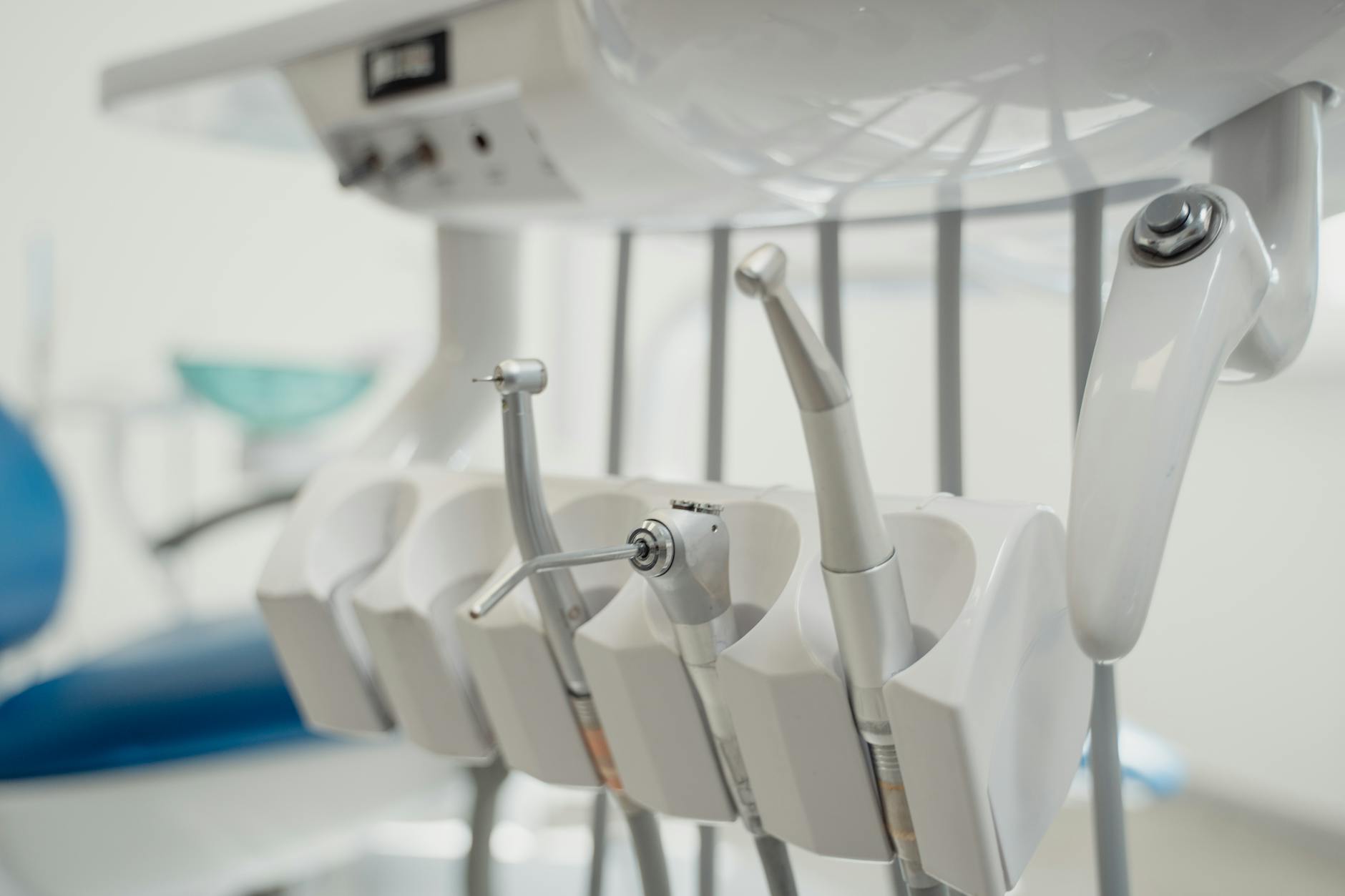Understanding Tooth Wear Erasions
Tooth wear means gradual loss of the hard outer layer of teeth. Two common types are erosion (chemical loss from acids) and attrition (mechanical wear from tooth-to-tooth contact). Knowing the difference helps explain symptoms, where the wear appears, and what fixes make sense.
Erosion happens when acids from diet (sodas, citrus, sports drinks) or stomach acid (reflux) dissolve enamel. It often creates smooth, scooped “cupping” on chewing surfaces and thinning enamel on front teeth; in reflux, the wear may show on the tongue-side of upper teeth. Attrition is different: it comes from clenching or grinding, making flat, shiny matching wear facets where teeth rub. People often ask about tooth wear erosion vs attrition because the patterns and solutions are not the same.
- Erosion: smooth, rounded wear; cupping; edges look thin/translucent.
- Attrition: flat, paired facets; shortened teeth; chipped edges from grinding.
- Erosion often shows unevenly (diet or reflux patterns); attrition mirrors on opposing teeth.
- Sensitivity can occur with both, especially when yellow dentin is exposed.
Your dentist looks at the pattern, asks about diet and reflux, and screens for grinding or dry mouth. Managing causes comes first: reducing acidic exposures, rinsing with water after acids, timing toothbrushing to avoid brushing softened enamel, addressing reflux with your physician, and using a night guard if you grind. Fluoride and remineralizing pastes can strengthen enamel and ease sensitivity.
Small defects, sharp edges, or localized “cups” are often smoothed and repaired with conservative dental bonding. This adds back missing structure, protects exposed dentin, and blends with surrounding enamel without removing healthy tooth.
When wear is moderate to severe, teeth may need stronger coverage to restore height and function. Options include onlays or full-coverage restorations as part of a planned bite rebuild, sometimes along with a protective night guard. Your dentist may recommend crowns or bridges to re-establish proper chewing surfaces and support the bite long term.
Differentiating Erosion and Attrition
Erosion and attrition both wear down teeth, but they happen in different ways and leave different clues. Erosion is chemical loss from acids softening enamel, while attrition is mechanical wear from tooth-on-tooth contact. Spotting the difference—often called tooth wear erosion vs attrition—guides how we protect teeth and which repairs last.
Erosion usually shows as smooth, rounded “cupped” areas on chewing surfaces and thinning, glassy edges on front teeth. When stomach acid is involved (reflux), the tongue-side of upper teeth often looks most affected; dietary acids can mark front and back surfaces. You may see yellow dentin peeking through, with sensitivity to cold or sweets. In contrast, attrition creates flat, shiny facets that match on opposing teeth, sometimes shortening the teeth and squaring the edges.
History helps. Frequent sodas, citrus, vinegar-based drinks, or sucking on lemons point toward erosion; morning sour taste, chronic heartburn, or a medical reflux diagnosis do as well. Sore jaw muscles on waking, chipping edges, or partners noticing grinding sounds suggest attrition from clenching or bruxism. Saliva flow matters too: dry mouth reduces natural buffering and raises erosion risk, while high bite forces raise attrition risk.
Surfaces tell the story. Erosion tends to affect broad areas, including spots that don’t touch when you bite, and restorations may stand proud as surrounding enamel dissolves. Attrition is most obvious on biting contacts and often mirrors precisely across the bite. Many people have a mix of both, so your exam looks for the dominant cause before planning care.
Why the distinction matters: reducing acid exposure, timing brushing after acids, and addressing reflux help stabilize erosion; bite guards, bite adjustments, and stress control help with attrition. For worn edges and cupped spots, conservative bonding can rebuild shape; when enamel is thin but tooth alignment and bite are stable, carefully planned porcelain veneers may restore form and protect exposed dentin. The goal is to stop the active wear first, then choose restorations that match the cause and your chewing forces.
Common Causes of Tooth Wear
Most tooth wear comes from two broad processes: acids that dissolve enamel (erosion) and tooth-to-tooth rubbing from clenching or grinding (attrition). Brushing too hard with abrasive products, or using teeth as tools, can add mechanical wear called abrasion. Dry mouth and certain health conditions can speed up any of these pathways. Understanding which process dominates guides the best way to protect and repair your teeth.
Erosion is chemical. Frequent exposure to acids—sodas and sports drinks, citrus, vinegar-based beverages, sour candies, or repeated vomiting—softens enamel so it can wear away more easily. Stomach acid from reflux (GERD or laryngopharyngeal reflux) is especially strong and commonly linked to dental erosion in adults [1]. People often frame this as tooth wear erosion vs attrition because the triggers and the wear patterns are different, even though they can occur together.
Attrition is mechanical. Nighttime bruxism (grinding) or daytime clenching increases the force and time that teeth rub on each other. High bite forces, stress, and certain sleep disorders make this more likely. Over time, the chewing edges can flatten and shorten, and small chips can appear. If teeth are out of alignment or there are missing teeth, contacts can be concentrated on fewer spots, accelerating wear in those areas.
Other factors modify risk. Low saliva flow from medications, dehydration, or mouth breathing reduces natural buffering and makes acids more harmful. Overzealous brushing right after acidic drinks can scrub softened enamel; waiting, rinsing with water, and using a soft brush helps. Occupational or hobby acid exposure (for example, frequent tasting of acidic foods and drinks) can add to the load. Erosive wear is common worldwide, so finding and reducing your personal sources—dietary acids, reflux, grinding, or technique—matters for long-term stability [2]. Once the causes are under control, your dentist can tailor protection and repairs that match how your teeth are wearing.
Symptoms and Signs of Tooth Wear
Tooth wear shows up as changes you can see and feel. Common symptoms include sensitivity to cold, sweet, or touch, and rough or sharp spots that catch your tongue. Signs your dentist looks for are thinning or shortened edges, flat shiny wear marks, “cupped” pits on chewing surfaces, small chips or cracks, and fillings that seem to stand up as surrounding enamel thins.
Erosion (acid-related) often makes smooth, shallow “scoops” on the biting surfaces and glassy, thin edges on front teeth. If stomach acid is involved, the tongue-side of upper front teeth may be most affected; with dietary acids, both front and back can show wear. Enamel may look more translucent, and yellow dentin can show through, which usually increases sensitivity. Many people ask about tooth wear erosion vs attrition—these patterns help tell them apart.
Attrition (tooth-on-tooth wear) typically leaves flat, shiny facets that match on opposing teeth. Edges can square off and teeth can look shorter over time; tiny chips and craze lines are common on front teeth. Some people notice chewing feels “different” or that food traps more easily because contact points have flattened. Sensitivity can occur if dentin becomes exposed, but attrition alone may be painless until wear is advanced.
Other clues come from your daily routine. Waking with tight or sore jaw muscles, dull temple headaches, and a partner hearing grinding point toward nighttime bruxism as a driver of attrition; however, symptoms and chairside signs do not always line up perfectly with device-recorded sleep bruxism activity [3]. For erosion, frequent acidic drinks, reflux symptoms, or a sour taste on waking raise suspicion. If you notice new translucency, faster chipping, or rising sensitivity, a prompt exam helps document baseline, identify the cause, and choose gentle care. Your dentist may use photos, wear indices, and bite records to track changes over time and to decide when protective measures (like mouthguards) or conservative repairs are needed before problems progress.
Diagnostic Techniques for Tooth Wear
Diagnosis starts with a careful history and a close look at patterns on the teeth. Your dentist maps where wear occurs, takes photos, and may use indices to score severity and track changes over time. These steps help tell tooth wear erosion vs attrition and whether the process is still active.
The clinical exam looks for smooth “cupping” from acids versus flat, matching facets from tooth-to-tooth rubbing, and notes if fillings sit higher as surrounding enamel thins. Bite contacts are checked with marking papers, and alignment, missing teeth, and fractured edges are recorded because they concentrate forces. X‑rays help review existing restorations and rule out other problems, while baseline photographs and shade/texture notes document appearance. Digital records—photos, intraoral scans, and a jaw relation record—support planning when teeth are shortened, and they allow precise before‑and‑after comparisons during rehabilitation [4].
Finding the cause is just as important as measuring the wear. A diet and reflux screen looks for frequent acids or symptoms of stomach acid exposure; saliva testing (simple flow and buffering checks) may be used when dry mouth is suspected. For possible grinding or clenching, your dentist reviews sleep and daytime habits, examines jaw muscles and joints, and looks for matching wear facets; when needed, surface electromyography can help evaluate chewing‑muscle activity as an adjunct to history and exam [5]. Serial photos or periodic scans can show whether wear is progressing or stable. If changes are ongoing, your plan focuses first on controlling causes (reducing acids, addressing reflux with your physician, and protecting contacts if you grind), then choosing conservative repairs that fit your bite and risk. Clear records make it easier to monitor improvement and adjust care before small problems become bigger ones.
Customized Conservative Repair Options
Conservative care means fixing what you need while preserving healthy tooth. We start by calming the cause (acids or grinding), then add protection and small, targeted repairs. Most early and moderate wear can be treated additively—building teeth back up—without drilling away sound enamel. Plans are individualized so repairs match your bite, habits, and goals.
First, protect and stabilize. Fluoride varnish and high‑fluoride toothpaste strengthen softened enamel and reduce sensitivity. Remineralizing pastes can help early erosion. For grinding or clenching, a custom night guard (occlusal splint) cushions contacts and spreads forces so fresh repairs are not rubbed away. Simple polish-and-smooth of sharp edges often provides instant comfort while you and your dentist address diet, reflux, and sleep habits.
Next, repair conservatively. Small “cupped” defects from erosion and chipped edges from attrition respond well to additive resin bonding. These micro‑layered fillings rebuild lost shape, seal exposed dentin, and blend with surrounding enamel, usually with little or no drilling. When chewing surfaces are more worn, adhesive onlays can restore height and function while saving as much natural tooth as possible. Because causes differ, choosing materials and thickness differs for tooth wear erosion vs attrition; erosion often needs broader coverage and acid‑resistant surfaces, while attrition repairs must handle higher bite forces and wear.
When alignment concentrates stress on a few teeth, gentle tooth movement can create more even contacts before bonding, so thinner, longer‑lasting repairs are possible. If appropriate, limited clear aligner orthodontics can uncrowd edges, level the bite, and make room for additive rebuilding instead of drilling. For significant wear, a staged “test drive” with provisional additive buildups helps confirm comfort, speech, and chewing before any long‑term restorations are placed.
Ongoing protection keeps your work stable. Wear your guard as advised, use fluoride at home, sip fewer acids, and wait before brushing after acidic drinks. Regular checks let us smooth small chips early, refresh polish, and track any change with photos or scans. By controlling the cause and rebuilding selectively, we keep treatment minimal today and flexible for the future.
Preventative Measures to Reduce Wear
Preventing tooth wear means two things: reduce acids and reduce rubbing. For erosion (acid loss), limit acidic hits and avoid brushing enamel while it is softened. For attrition (grinding or clenching), cushion and spread forces so teeth do not grind away. Prevention looks different for tooth wear erosion vs attrition, so we match steps to your risks.
To lower erosion: cut down how often you sip acidic drinks; keep them with meals, don’t swish, and chase with water. Wait 30–60 minutes before brushing after acids, and use a soft brush with a low‑abrasive fluoride paste. Your dentist may place fluoride varnish; in lab models, varnish helps enamel resist erosive challenges [6]. If reflux is suspected, talk with your physician and avoid late‑night acids. Stay hydrated and consider sugar‑free gum to boost saliva, which helps buffer acids.
To limit attrition: if you clench or grind, a custom night guard (occlusal splint) can protect enamel and any new repairs by spreading force. Tracking matters too—photos or scans can show if wear is ongoing; recent work shows digital methods can measure tooth wear changes in patients who wear occlusal splints [7]. During the day, keep teeth apart at rest, relax jaw muscles, and avoid chewing on ice, pens, or hard seeds.
Keep teeth strong between visits. Brush twice daily with fluoride, limit between‑meal acids and sugar, and sip water often. Emerging research is testing protein‑ and peptide‑based oral films to help prevent early erosion in vivo [8]. Regular checkups let us smooth sharp spots early and add small, conservative repairs before problems grow. If you are planning a visit, check our current hours.
The Importance of Regular Check-Ups
Regular check-ups matter because tooth wear often progresses quietly before you feel pain. These visits let your dentist spot early patterns, tell tooth wear erosion vs attrition apart, and address causes before bigger repairs are needed. Consistent monitoring also protects any restorations you already have and helps keep treatment as conservative as possible.
At each visit, we compare today’s teeth to your baseline with photos, notes about edges and texture, and when useful, scans or simple models. Small changes over 6–12 months—thinner edges, new “cupping,” or growing flat facets—tell us whether acids, grinding, or both are active. We review diet, reflux symptoms, saliva flow, and medications that dry the mouth, then tailor guidance: timing toothbrushing after acids, reducing frequent acidic sips, and strategies to keep teeth apart at rest. Sharp spots can be smoothed, sensitivity managed, and high‑risk areas protected before they fracture or deepen.
Regular exams also refine the plan as life changes. If you use a night guard, we check its fit and the wear marks it records, adjusting the bite so forces spread evenly. If erosion is the driver, we watch for signs of reflux, coordinate with your physician when appropriate, and reinforce fluoride use and gentle brushing technique. These stepwise adjustments turn a moving target into a stable situation, so repairs last longer and remain minimal.
Check-ups help you choose the right timing for any repair. When we catch wear early, additive options—polishing sharp edges, sealing exposed dentin, or small bonded buildups—can restore comfort and shape without removing healthy tooth. When changes are more advanced, measured records from prior visits guide precise rebuilding of height and function, rather than guesswork. After treatment, regular visits let us maintain polish, reapply protective agents, and fix minor chips before they spread. Over time, this steady, measured approach preserves more of your natural tooth, reduces surprises, and keeps your bite comfortable for daily life.
Aftercare for Restorative Procedures
Aftercare helps new fillings, onlays, or crowns settle in comfortably and last longer. Expect mild temperature sensitivity or sore chewing muscles for a few days; these usually ease as your bite refines and teeth adapt. Protecting repairs means managing acids, controlling grinding forces, and keeping the margins clean without abrasion.
For the first day, chew on the other side until numbness wears off so you do not bite your cheek or lip. Avoid very hard or sticky foods on the treated teeth for 24–48 hours while the cement and bonding fully set. Brush gently with a soft brush and a low‑abrasive fluoride paste; floss normally, gliding out to avoid snapping against new edges. If sensitivity appears, lukewarm rinses and routine over‑the‑counter pain relief can help; call if pain spikes on biting or lingers more than a few days.
Your bite should feel even. If one tooth hits first, if chewing feels “high,” or if you get a sharp twinge on release, a quick adjustment makes a big difference—do not try to “wear it in.” If you were given a night guard, start wearing it the first night to shield repairs from grinding. Rinse the guard with cool water after use, clean with mild soap (not hot water or bleach), let it dry, and store it ventilated. Bring it to follow‑ups so we can check the fit and the wear marks it records.
Match aftercare to the cause of your wear. For acid‑related erosion, limit acidic sips, rinse with water after acids, and wait 30–60 minutes before brushing so you do not scrub softened enamel. For attrition from clenching or bruxism, aim for “lips together, teeth apart” during the day, avoid chewing ice or pens, and use your guard nightly. Many people ask about tooth wear erosion vs attrition; your home routine should target the dominant cause so new restorations are not stressed the same way again.
Keep restorations strong between visits. Use fluoride toothpaste twice daily; your dentist may top up protection with periodic varnish and quick repolishing to keep edges smooth. Schedule and keep review appointments so small high spots, chips, or seal losses can be corrected early. Contact the office sooner if you notice persistent biting pain, sensitivity that worsens over a week, a rough edge that catches floss or tongue, or a loose or rocking restoration.
Long-term Management of Tooth Wear
Long-term management means two things: stop the active wear and rebuild teeth in a way that can be maintained over time. We first control the cause, then repair conservatively, protect the work, and monitor with regular checks. Plans differ for tooth wear erosion vs attrition, but the goal is the same—stable, comfortable teeth that last.
Control the cause first. For erosion, reduce acidic hits, rinse with water after acids, wait before brushing, and address dry mouth. If reflux is suspected, coordination with your physician is important because stomach acid needs medical management alongside dental care [9]. For attrition from clenching or grinding, a well‑fitting night guard helps spread force and shields any new repairs.
When rebuilding is needed, dentists favor additive, minimally invasive methods whenever possible. Small bonded additions can restore shape; when more height is needed, staged treatment with provisional mock‑ups lets you “test drive” comfort, speech, and chewing before anything is finalized. Changes in bite height are planned and verified step by step, not guessed, and a protective guard is often part of the plan to keep forces even [10].
Maintenance keeps everything working. Expect periodic polish, fluoride support, and bite checks to catch small chips or high spots early. Evidence suggests that carefully planned, minimally invasive full‑mouth adhesive rehabilitations can perform well over time when paired with risk control and regular follow‑up [11]. Day to day, use a soft brush with fluoride toothpaste, limit frequent acidic sips, and wear your guard as advised; bring it to visits so we can confirm fit and replace it when it wears. If your habits or health change—new medications, more reflux symptoms, increased stress—tell your dentist so the plan can be updated. This steady, stepwise approach protects your natural tooth structure, helps repairs last longer, and keeps your bite comfortable as the years go by.
Frequently Asked Questions
Here are quick answers to common questions people have about Tooth Wear: What’s Causing It and How We Fix It in Glendale, AZ.
- What is the difference between erosion and attrition?
Erosion and attrition are both forms of tooth wear, but they occur differently. Erosion is caused by chemical processes, such as the dissolution of enamel from dietary acids or stomach acid. You might notice smooth, rounded spots and thinning edges on your teeth. Attrition, on the other hand, is mechanical wear from grinding or clenching teeth. This results in flat, shiny facets and sometimes shorter teeth due to the repeated physical contact between teeth. Both types require different management approaches to protect your teeth effectively.
- How can I prevent tooth erosion?
To prevent tooth erosion, limit your intake of acidic foods and beverages, such as sodas, citrus fruits, and sports drinks. Always rinse your mouth with water after consuming these acids and avoid brushing your teeth immediately afterwards, as this can damage soft enamel. Use a fluoride toothpaste to strengthen your teeth, and consider discussing with your physician if you experience acid reflux. Staying hydrated and chewing sugar-free gum can also stimulate saliva, which helps protect enamel.
- How is tooth wear repaired?
Repairing tooth wear often involves conservative treatments that preserve as much of the natural tooth as possible. Dental bonding is commonly used to address small defects, rebuilding the tooth’s shape and sealing exposed areas. For more significant wear, partial or full restorations like crowns or bridges may be needed. These procedures restore the height and function of your teeth and safeguard them against future wear. The choice of treatment depends on the extent of wear and the cause behind it.
- What role does diet play in tooth wear?
Diet is a significant factor in tooth wear, especially erosion. Foods and drinks high in acids, like citrus fruits, soft drinks, and vinegar-based products, can soften and eventually wear away your tooth enamel. It’s important to moderate the consumption of these items and follow preventive measures like rinsing your mouth with water afterwards. Balancing your diet with neutral and alkaline foods can help mitigate acid impacts on your teeth.
- Can grinding teeth cause tooth wear?
Yes, grinding your teeth, a condition known as bruxism, can cause significant tooth wear. This mechanical action leads to attrition, where repeated contact between teeth wears down surfaces, creating flat facets and sometimes causing teeth to become shorter and edges to chip. Wearing a night guard can protect your teeth from grinding during sleep. Managing stress and correcting bite alignment might also help reduce the habit if teeth grinding is a concern.
References
- [1] Relationship Between Laryngopharyngeal Reflux, Gastroesophageal Reflux Disease, and Dental Erosion in Adult Populations: A Systematic Review. (2025) — PubMed:39826062 / DOI: 10.1007/s10620-024-08824-9
- [2] Global Prevalence of Erosive Tooth Wear. (2025) — PubMed:40435957 / DOI: 10.1159/000543785
- [3] Validity between signs and symptoms of sleep bruxism against a validated portable electromyographic device. (2024) — PubMed:39670031 / DOI: 10.4317/jced.61720
- [4] From Virtual Maxillomandibular Relationship Determination to Clinical Implementation for Digital Functional-Esthetic Rehabilitation in Severe Generalised Tooth Surface Loss. (2025) — PubMed:40717421 / DOI: 10.1111/jerd.70014
- [5] [Application of surface electromyography in patients with functional disorders of the masticatory muscles]. (2025) — PubMed:40899297 / DOI: 10.17116/stomat202510404183
- [6] Performance of enamel after varnish application under simulated erosive conditions. (2025) — PubMed:40784484 / DOI: 10.1016/j.jdent.2025.106026
- [7] Digital measurement of tooth wear in sleep bruxism patients wearing occlusal splints. (2025) — PubMed:40841662 / DOI: 10.1186/s12903-025-06716-6
- [8] A new frontier in oral care with proteins and peptide infused in orally disintegrating film to prevent early dental erosion in vivo. (2025) — PubMed:40998105 / DOI: 10.1016/j.jdent.2025.106129
- [9] Erosive Tooth Wear and Gastroesophageal Reflux Disease: An Interdisciplinary Management for a Relevant Dental Problem. (2025) — PubMed:40546476 / DOI: 10.7759/cureus.84668
- [10] Rehabilitation Strategies and Occlusal Vertical Dimension Considerations in the Management of Worn Dentitions: Consensus Statement From SSRD, SEPES, and PROSEC Conference on Minimally Invasive Restorations. (2025) — PubMed:39931975 / DOI: 10.1111/jerd.13432
- [11] Clinical performance of minimally invasive full-mouth rehabilitation using different materials and techniques for patients with moderate to severe tooth wear: a systematic review and meta-analysis. (2025) — PubMed:39875663 / DOI: 10.1007/s00784-025-06181-z






